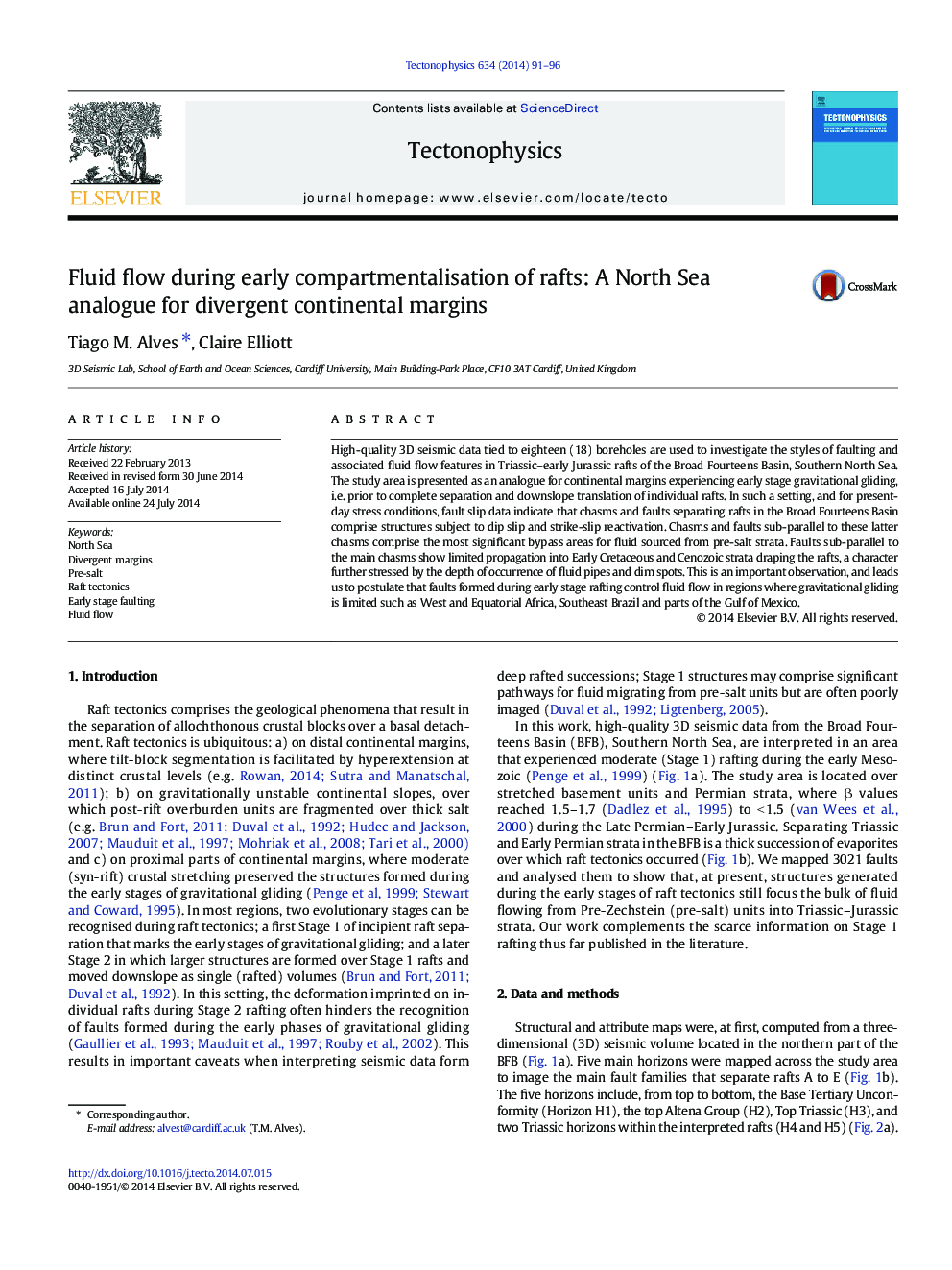| Article ID | Journal | Published Year | Pages | File Type |
|---|---|---|---|---|
| 4691820 | Tectonophysics | 2014 | 6 Pages |
•The North Sea is an analogue for margins showing early stage gravitational gliding.•Chasms and faults are subject to slip and strike-slip reactivation.•Chasms and faults parallel to chasms, comprise significant fluid bypass features.•Faults bounding discrete rafts show limited vertical propagation.
High-quality 3D seismic data tied to eighteen (18) boreholes are used to investigate the styles of faulting and associated fluid flow features in Triassic–early Jurassic rafts of the Broad Fourteens Basin, Southern North Sea. The study area is presented as an analogue for continental margins experiencing early stage gravitational gliding, i.e. prior to complete separation and downslope translation of individual rafts. In such a setting, and for present-day stress conditions, fault slip data indicate that chasms and faults separating rafts in the Broad Fourteens Basin comprise structures subject to dip slip and strike-slip reactivation. Chasms and faults sub-parallel to these latter chasms comprise the most significant bypass areas for fluid sourced from pre-salt strata. Faults sub-parallel to the main chasms show limited propagation into Early Cretaceous and Cenozoic strata draping the rafts, a character further stressed by the depth of occurrence of fluid pipes and dim spots. This is an important observation, and leads us to postulate that faults formed during early stage rafting control fluid flow in regions where gravitational gliding is limited such as West and Equatorial Africa, Southeast Brazil and parts of the Gulf of Mexico.
